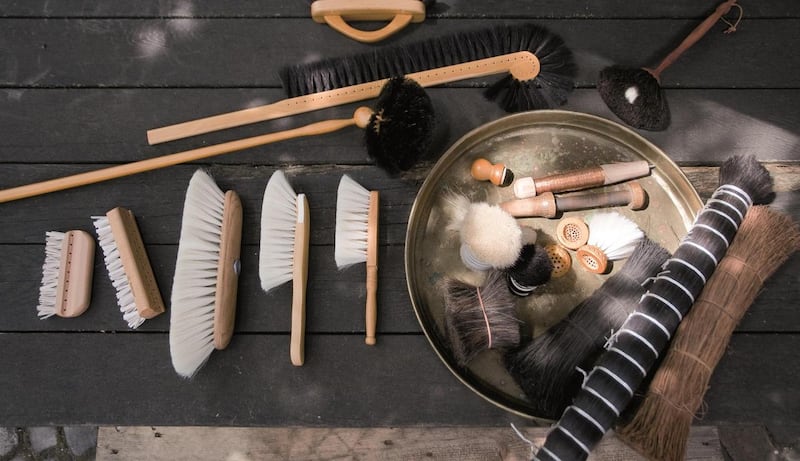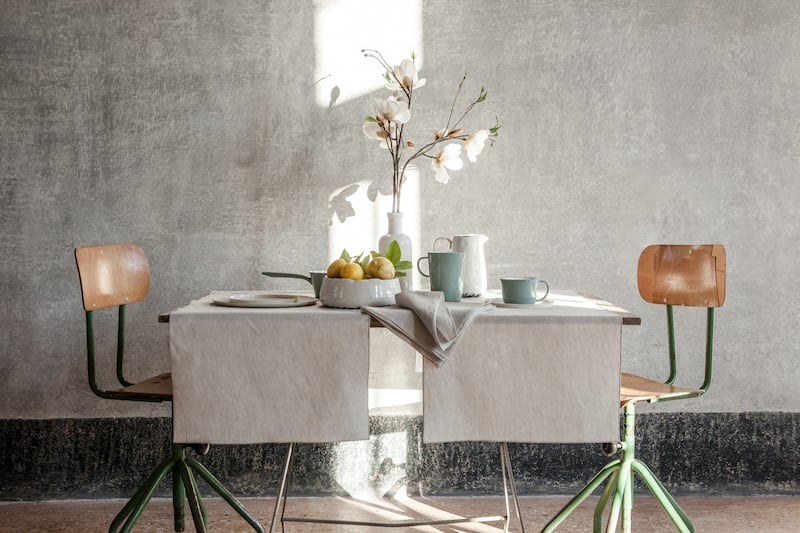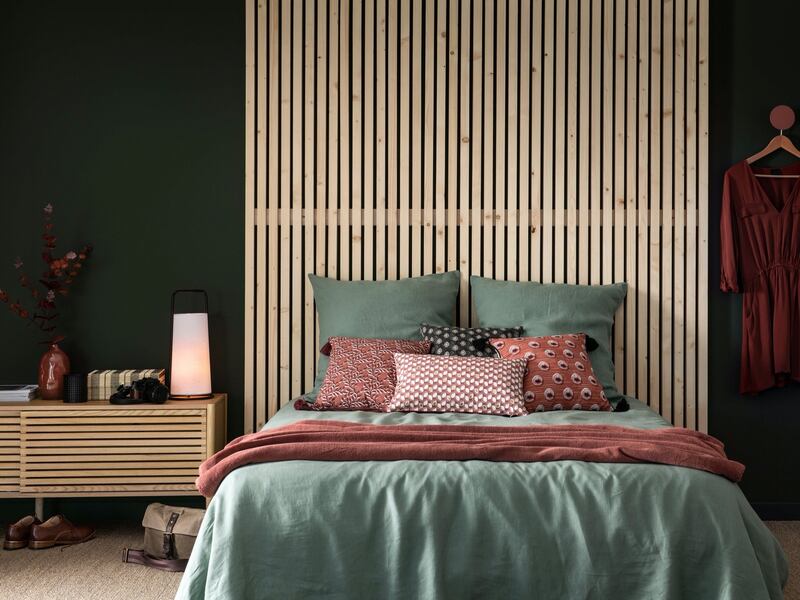Do you want to sell your property? Listen to the new mood music. Decluttering and cleaning are still key factors, but to ready your home and ink the deal you first need to understand the market as it is right now.
The property market remains hot but the mood has shifted. Buyers now want homes that they can walk into, explains Eoin O’Toole, senior negotiator at Lisney’s Howth Road office.
In a market where such stock makes up only 45 per cent of available homes for sale in Dublin, according to research by Lisney, it’s a very small pond to be fishing in. The same research shows a further 35 per cent of the Dublin market as executor sales, with ex-rentals accounting for the remaining 20 per cent.
There's little doubt that it's a good time to sell as there is a shortage of stock
Nationwide research conducted by the Sherry FitzGerald Group puts the investment property market at 30 per cent of its transactions in the first nine months of 2021, while executor sales account for 13 per cent.
Year on year, the time it takes to sale agree a home has reduced by 33 per cent, from three months in the period to the end of September 2020, to just two months in the first nine months of 2021, according to the group.
Buyers are ready to go, with most having used their time working from home to get their finances in order. But there are more and more chains, with buyers also selling – often within the same period, says O’Toole. Some vendors are even pulling out of deals because they can’t find another place to trade up, down, or right-size to.
When it comes to asking prices, sellers have become more cautious, says Deirdre O’Gara, co-owner of Mullery O’Gara. “Vendors are no longer going with the highest asking price. They’re more interested in hearing solid advice and in being talked through the process to see exactly where you’re getting your proposed figures from.”
That said, there’s little doubt that it’s a good time to sell as there is a shortage of stock. Normal availability requires 2-3 per cent of the nation’s housing units to be for sale, according to Will Moore, regional director of Sherry FitzGerald’s Dublin west division. “Currently less than 1 per cent is on the market. In the middle of 2021 this fell to 0.6 per cent, with very few new homes coming on stream. This means first-time buyers were pushed to shop in the second-hand market which drove demand there further.”
Tempted? Before you put that “for sale” sign up outside your home, here are six things that you need to consider.
1. Documentation
While properties are moving quickly, the conveyancing process governing change of ownership has not kept pace, says solicitor Daireann Gibson of legal practice Gibson and Associates LLP. “Before you go to market, request [the title] deeds from the lender and have your solicitor review [the] same to provide good title and to confirm that boundaries are in order. Also request that he or she addresses pre-contract enquiries.
“You will also need documentation covering any renovations you have carried out on the property. Documents from building control or any planning permissions may also be required. To determine what is needed in this regard, engage the services of an architect to confirm that any changes you have made to your home are in compliance. All this will speed up the sale.”
2. Clear your clutter
The property should be clear, tidy and presentable, says Brian Dempsey, partner at DNG. “Decluttering is key. Listen to what your agent says by way of removing beloved items to help create a blank canvas. Buyers want to be able to see themselves living there and that view is of a clutter-free life. There’s no mystery to it. It is hard work; but no pain, no gain. Emptying the rooms of everything will better show off their proportions and floor space. You need to take the view that it will be easier in the long run [to have decluttered] than have the home hanging on the market for months or more.”
Stage the property so it looks its absolute best in photos, video and possibly virtual reality tours
3. Turn it into turnkey
Properties in walk-in condition sell more quickly and achieve stronger prices, says Dempsey. “Most buyers will have made a decision on your home within eight to 10 seconds.” This is especially true of homes in walk-in condition, so get yours to look its best. Agent Owen Reilly suggests staging the property, especially for its marketing imagery, so it looks its absolute best in the photos, video and possibly VR (virtual reality) tours. You can hide very little in video and VR, Reilly says.
Increasingly, buyers have less time to physically view properties so they use these tools to whittle their long list down to those potential homes they go to view in person. While the cost of staging a property for sale typically comes in at a minimum of €10,000, the payback is potentially significant both in terms of the time saved and price achieved.
4. Is your home a doer-upper?
The doer-upper, in this market, is taking longer to sell. This is, in part, because the cost of building works continues to increase, making it more difficult for some potential buyers to secure the funding they would require.
Ex-rentals may get a minor facelift, according to Eoin O’Toole of Lisney. You may be able to identify them by the grey laminate flooring that covers the downstairs and the same mid-grey coloured carpets covering the stairs and accommodation.
Executor-sale vendors aren’t usually inclined to spend money, bar possibly painting the place white, decluttering and pulling up old, stained or moth-eaten carpets, says O’Toole.
5. Find the right agent
Shop local, is the counsel of Deirdre O’Gara. “An agent based in Dún Laoghaire may not be the best agent to sell a house in Killiney. Pick agents with good track records local to the area where the property is situated. Three [agents] should be enough to get a good overview of its valuation.
“You also want the agent you meet the first time to be the same agent at all the viewings and the person who communicates directly with the buyers. These are tasks that should not be passed on to a junior [agent].”
6. Pricing strategy
An agent’s valuation of the property and its pricing strategy is actually regulated under the national Property Services Regulatory Authority (PSRA) guidelines, says Will Moore of Sherry FitzGerald. The relevant price range employed by a PSRA licensee dictates that the difference between the upper and lower limit of a valuation should be capped at a maximum of 10 per cent.
“If a property has an advised minimum value (AMV) range of €500,000 to €550,000, then we’re supposed to quote an asking price within that range; neither below nor above that,” Moore explains.
You can check your agent is registered by looking at the register of licensed property services providers on the PSRA's website, psr.ie.
In the service agreement you sign with the agent there is a statement of market price. This is based on comparable evidence, Moore adds, explaining that each agent you meet should present you with a list of comparables that should help to support the proposed asking price.
If you don't have your pricing strategy right, all the sprucing-up effort is in vain
The equivalent of showing your rough work in an exam, these comparables should list other homes of a similar style, size, Ber, garden orientation, condition and include a price per square foot or square metre so you can compare like with like to the greatest extent possible.
While the Property Price Register gives certain information on prices achieved in residential sales across Ireland since 2010, a good agent should also have the background on ongoing sales in your area, the number of bidders on each property and what each sale achieved, before the price has been recorded on the register. O’Gara adds: “The agent you select should already have the contact details of underbidders in the area.”
If you don’t have your pricing strategy right, all the sprucing-up effort is in vain, says Marian McQuillan, director at Quillsen. “You want an asking price that isn’t a ‘silly low’, but not a high price either. A lot of buyers out there have been looking for a long time and may have already bid on several properties. If you put your property on at a price that they consider too high for their budget they simply won’t bid. Equally, if you price too low – say €600,000 on a property worth €700,000 – it will bring in parties who can’t really afford it. This will only end up disappointing them as well as distracting the agent from the bidders who can afford to go the distance. It also lengthens the sale process.”
Some properties are difficult to price, says McQuillan. “A buyer of a wreck that hasn’t been lived in for 10 years may choose to upgrade just the electricity and heating, spending €100,000, while another party might spend €500,000. In these instances you put it on at a price that will appeal to the person with only €100,000 [to spend on upgrade works] and let the market find itself.”
Practicalities

Clean, dust and declutter
Clear, clean and dust every surface, removing all visual clutter including personal items such as family photographs and any artwork that might distract a viewer. This selection of brushes from Monkstown-based The Blue Door are designed to reach all difficult spots from lampshades and ceilings to behind radiators and venetian blind blades. Open windows to air empty homes and go easy on the scented candles. thebluedoordirect.com

Create a calm and serene space
While you might love tomato-red walls and zany wallpapers, your potential buyers may not share your taste. This will either distract them while viewing your property, and could put them off buying it altogether. Buyers want to be able to picture themselves living in your space. For that to happen, you need to depersonalise it. Paint walls in soft neutral colours or just a soft white that illuminates, but not in a harsh way. Adopt the same approach to the furniture. Remove any pieces that are too big for the room or limit a buyer's ability to move around it freely. Pale, neutral-coloured seating is a tried and tested approach. It won't draw attention to itself. This GH100 media chaise by DFS (€3,509) has clever storage in its armrest (perfect for remote controls) with further storage in the matching footstool where you can stuff toys and newspapers out of sight in a nanosecond. dfs.ie

Be kitchen confident
Simple tablescaping will jazz up an eat-in kitchen. Cover a worn table top with a cloth or runner, like these pictured here from Once Milano, and add simple fresh flowers and a few settings if you have any nice tableware. Equally, fresh flowers on a counter top or island that has been cleared of cookbooks, appliances, pots and pans offers a lovely touch. Even greenery cut from the garden will do the trick. oncemilano.com

Play dress-up in bedrooms
Dressed beds can help to make accommodation look more inviting than bare beds do. It also demonstrates that in small box rooms or bedrooms there is the physical space for a single or double bed. Coloured bed linen in soft shades can be used to hide unsightly beds and create a sense of cohesion. Soft blues, greys, blush pinks or sage greens, such as those pictured here by Maisons du Monde with plenty of scatter cushions and/or pillows will make the rooms look far more appealing. maisonsdumonde.com












